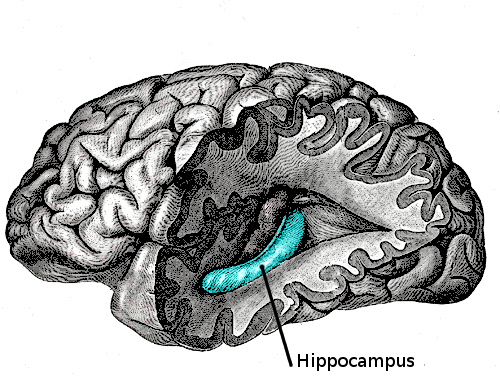In 2001, Reginald Golledge stated: “Advances in Magnetic Resonance Imagery (MRI) have given some promise for tracking what parts of the brain are used for what functions. There is difference of opinion regarding the value of this technology, but much of the negative criticism is directed towards identifying which parts of the brain appear to be used for emotions such as love or hate, or for aesthetic reactions to concepts of beauty, danger, and fear. Somewhat less controversy is present in the spatial domain, where the 25 year old hypotheses of O’Keefe and Nadel (1978) – that the hippocampus is one’s “cognitive map” (or place where spatial information is stored) – is being actively investigated. Neurobiologists may be able to determine which neurons “fire” (or are excited) when spatial information relating to objects and their locations are sensed and stored. If (Nano-Bio-Info-Cognitive Technology) NBIC can develop reliable place cell analysis, the process of “mapping” the human brain could transform into examining the geography of the brain (Golledge, R. G. [2001, December 3-4]. Spatial cognition and converging technologies. Paper presented at the Workshop on Converging Technology (NBIC) for Improving Human Performance, Washington, DC.).
Nine years later, neurobiologists using functional magnetic resonance imaging (fMRI) have come a step closer to fulfilling Golledge’s predictions. An article in the Nature advance online publication of 20 January 2010 reports that there is “evidence for grid-cell-like representations in humans (which) implicate a specific type of neural representation in a network of regions which supports spatial cognition and also autobiographical memory” (Doeller, C.F., Barry, C. & Burgess, N. 2010. Evidence for grid cells in a human memory network. (doi:10.1038/nature08704). Experiments using fMRI on rats and human subjects led the authors to state: “Our study illustrates the ability to infer neural representations in humans by using fMRI in conjunction with single-unit recording in behaving animals, promising a coherent understanding of behaviour at the neural and systems levels. The observed grid-like representations support spatial memory and are found in a circuit of regions which markedly overlaps the network for autobiographical memory and imagery. These types of regularly repeating representation may provide a clue to the neural basis of autobiographical memory, perhaps encoding temporal as well as spatial context for combination with parallel networks representing non-spatial information.”
The aim of such studies is to determine how and where information is encoded, stored, and used in human cortical systems. Hopefully, such an understanding eventually will allow the geography of the brain to be “mapped,” as Golledge envisioned. “Externalizing cognitive maps is one of a set of useful ways for comprehending the actions and behaviors of humans. Geographers, in particular, have sought to obtain spatial products and then examine them to explain human actions and activities or behaviors in space” (Golledge, Ibid.). Such examinations may provide what Prof. Kostas Goulias refers to as “potential lessons for efficient processing of space-time data and our expectation of reaching a better understanding of human-environment interaction that involves personal and next of kin biographies.” These and related lines of enquiry are being pursued by several disciplines at UCSB, particularly at the Brain Imaging Center, the Sage Center for the Study of the Mind, the Kavli Institute for Theoretical Physics, and the Center for Spatial Studies (spatial@ucsb). The ultimate goal, to quote the Sage Center, “is both highly ambitious and refreshingly simple: when you understand the mind, you understand the human condition.”
Article by Bill Norrington; thanks to Prof. Goulias for suggesting and contributing to this article.



